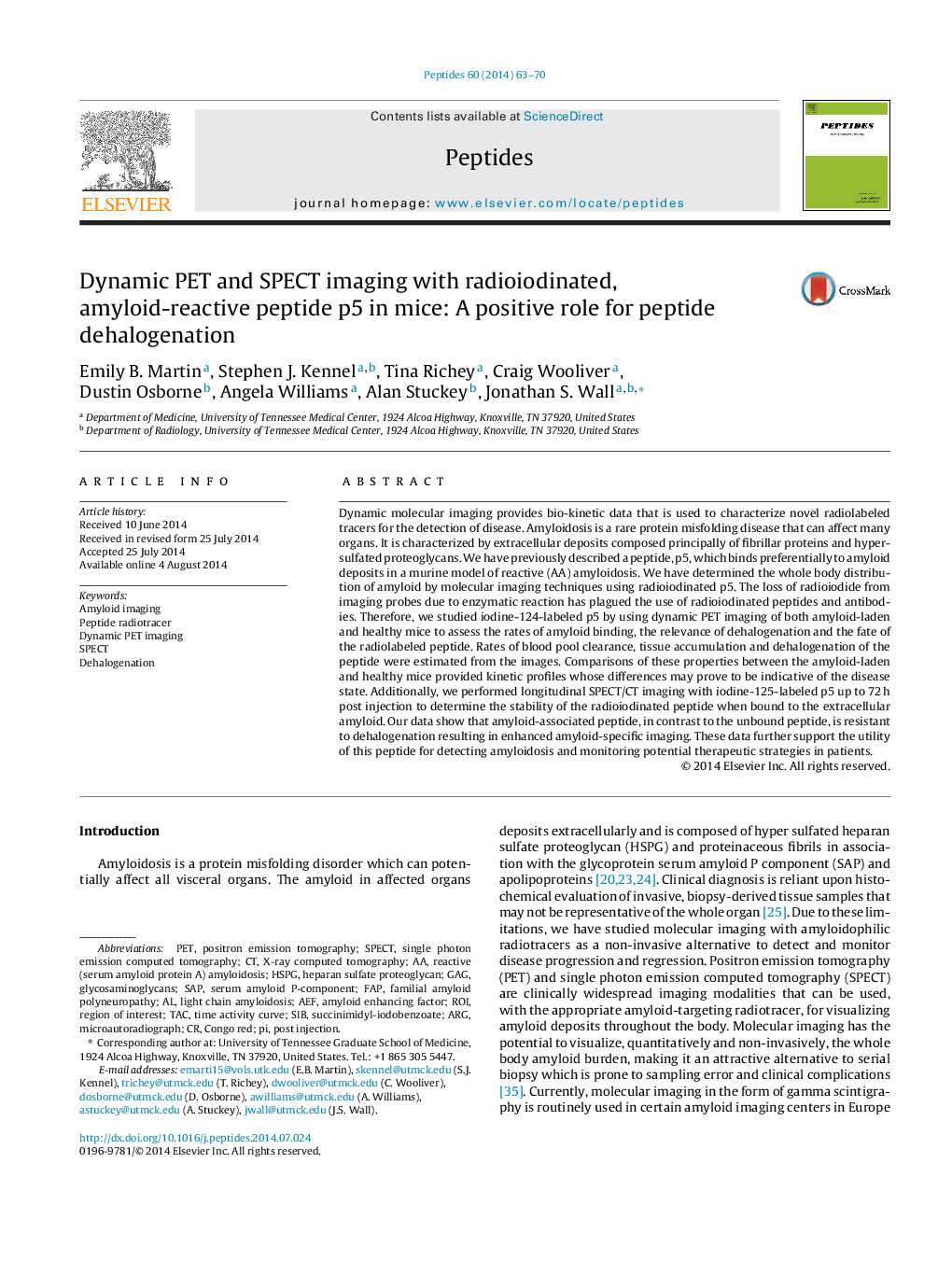| Article ID | Journal | Published Year | Pages | File Type |
|---|---|---|---|---|
| 8348273 | Peptides | 2014 | 8 Pages |
Abstract
Dynamic molecular imaging provides bio-kinetic data that is used to characterize novel radiolabeled tracers for the detection of disease. Amyloidosis is a rare protein misfolding disease that can affect many organs. It is characterized by extracellular deposits composed principally of fibrillar proteins and hypersulfated proteoglycans. We have previously described a peptide, p5, which binds preferentially to amyloid deposits in a murine model of reactive (AA) amyloidosis. We have determined the whole body distribution of amyloid by molecular imaging techniques using radioiodinated p5. The loss of radioiodide from imaging probes due to enzymatic reaction has plagued the use of radioiodinated peptides and antibodies. Therefore, we studied iodine-124-labeled p5 by using dynamic PET imaging of both amyloid-laden and healthy mice to assess the rates of amyloid binding, the relevance of dehalogenation and the fate of the radiolabeled peptide. Rates of blood pool clearance, tissue accumulation and dehalogenation of the peptide were estimated from the images. Comparisons of these properties between the amyloid-laden and healthy mice provided kinetic profiles whose differences may prove to be indicative of the disease state. Additionally, we performed longitudinal SPECT/CT imaging with iodine-125-labeled p5 up to 72Â h post injection to determine the stability of the radioiodinated peptide when bound to the extracellular amyloid. Our data show that amyloid-associated peptide, in contrast to the unbound peptide, is resistant to dehalogenation resulting in enhanced amyloid-specific imaging. These data further support the utility of this peptide for detecting amyloidosis and monitoring potential therapeutic strategies in patients.
Keywords
serum amyloid P-componentHSPGAEFFAPGAGTACROISIBlight chain amyloidosisArgSPECTPost InjectionAmyloid imagingX-ray computed tomographysingle photon emission computed tomographyPositron emission tomographyDehalogenationCongo redSAPamyloid enhancing factorTime activity curveregion of interestHeparan sulfate proteoglycanPETfamilial amyloid polyneuropathyGlycosaminoglycans
Related Topics
Life Sciences
Biochemistry, Genetics and Molecular Biology
Biochemistry
Authors
Emily B. Martin, Stephen J. Kennel, Tina Richey, Craig Wooliver, Dustin Osborne, Angela Williams, Alan Stuckey, Jonathan S. Wall,
